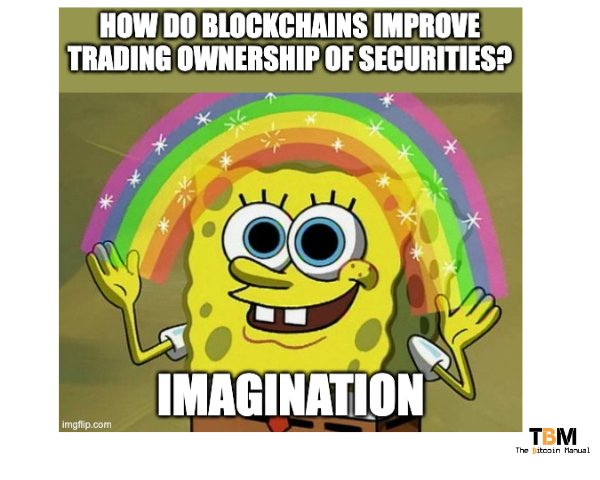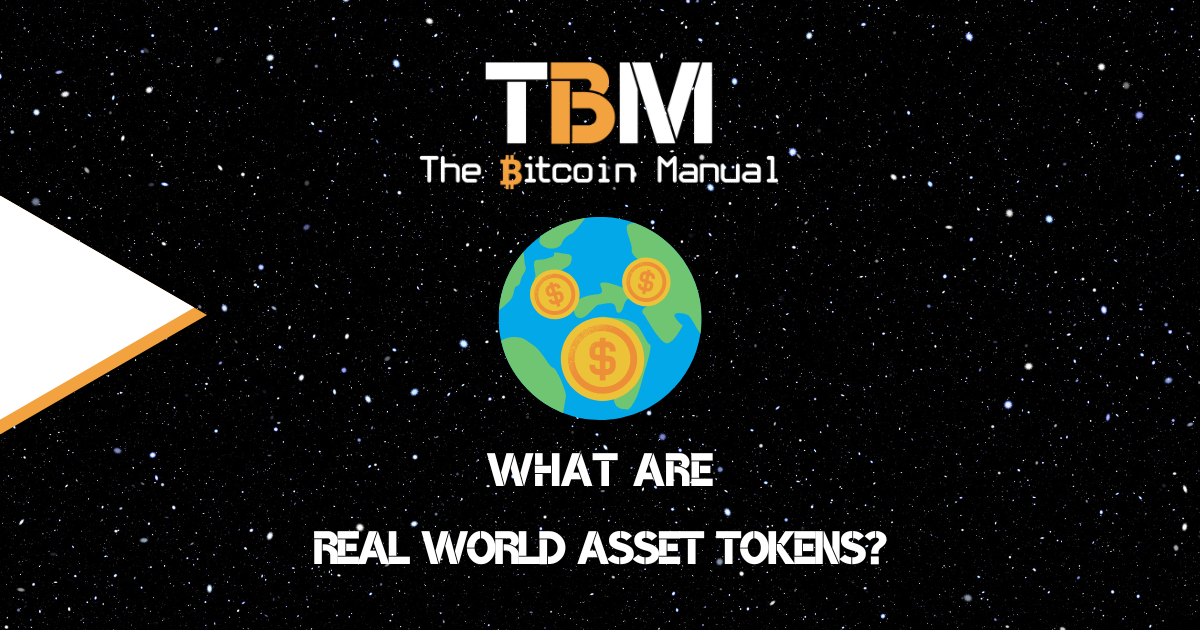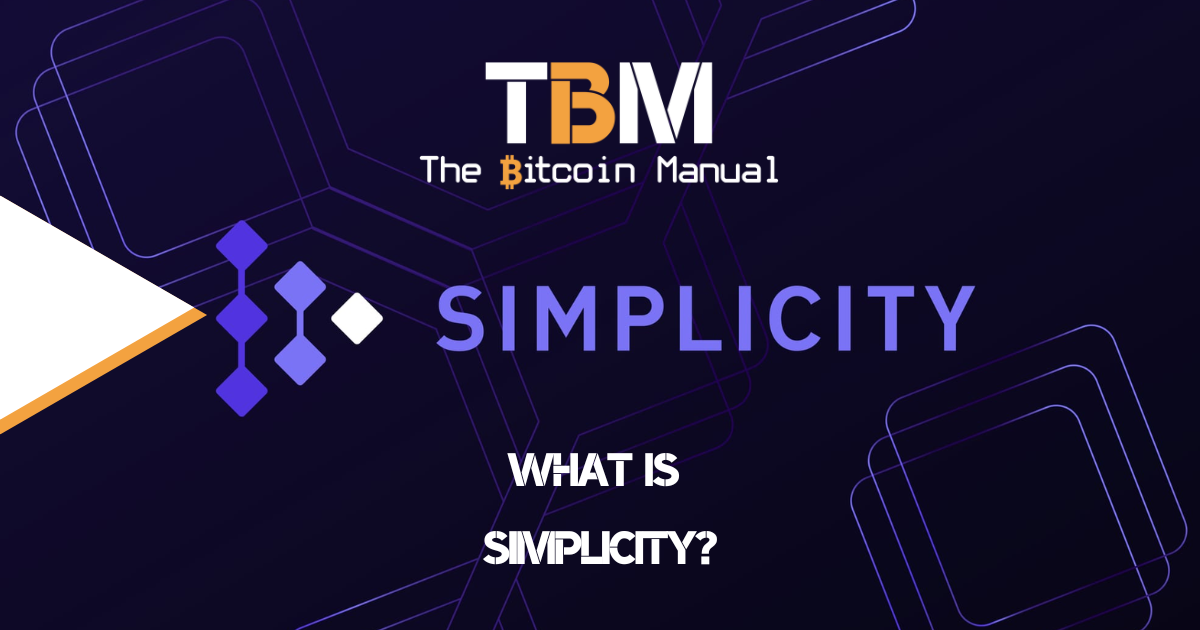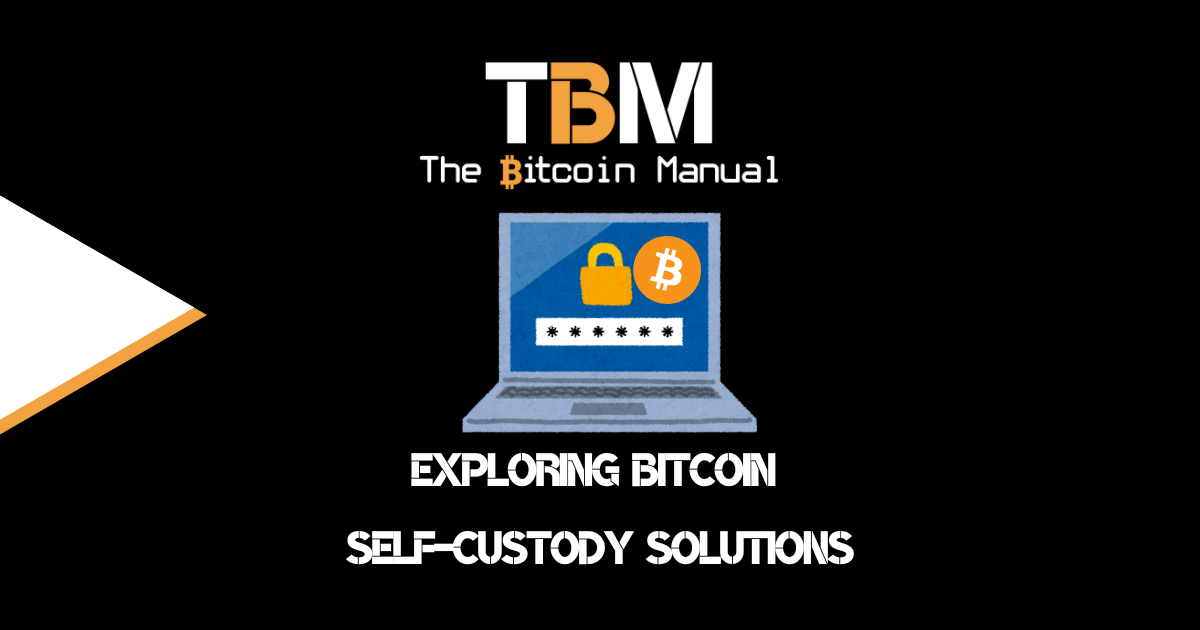Real-world assets, or RWAs, refer broadly to any traditional security or physical asset that derives its value from outside the blockchain, unlike the closed-loop ecosystem that Bitcoin provides.
Think of it as a 3rd party representation of the underlying asset; these tokens can represent stock certificates or bonds, they could be NFTs that represent non-fungible assets like real estate and art or be used to issue fractional ownership of an asset like a REIT or some passive fund like an ETF. By tokenising RWAs, you create a digital claim based on the asset on a specific blockchain or multiple blockchains.
Tangible assets can be issued on the chain to represent any financial investment the issuer holds. Tokens can represent precious metals, raw materials, agricultural products, real estate, artwork, and music licensing.
RWAs are nothing new; they’re merely rebranding what existed prior. However, security token offerings had little traction in the early days of Bitcoin and the broader blockchain industry.
Why? It’s simple, really.
The entire point of issuing tokens was to create unregulated securities ad nauseam and dump them into the public domain for a quick profit while regulators struggled to keep up.
Why would I waste my time complying with regulations, creating investor whitelists, purchasing underlying assets, and all that goes along with it if all I want is exit liquidity?
The whole point of tokens was to play in a grey market and profit from regulatory arbitrage, naive investors attracted to the space, and, of course, the information asymmetry of spinning up your own monetary network.
As Bitcoin has grown to a trillion-dollar asset class and looks like it will become a multi-trillion-dollar asset class, the suits are starting to see it not as an alternative market but as a market that needs to be incorporated into their investment strategy and allocation considerations, with the spot ETF providing ample evidence of that.
Now that Wall Street has a taste for this market, it is only natural that they would extend into the dabbling into the broader blockchain market.
What are RWAs?
Financial markets have been trading digital certificates for many years, all consolidated on private servers with the various stock exchanges and brokers involved, and no one cared too much about the technical back end as long as trades were settled.
Instead of dealing with high-performance servers, you’ll issue certificates on a slow, clunky public blockchain and use smart contracts with a history of hacks longer than Sam Bankman-Frieds rap sheet.
That’s an RWA token.
Once you peel back all the marketing, these RWAs essentially boil down to security token offerings with a whole new branding scheme.
The first real-world asset to find product market fit on a blockchain was Stablecoins. Pegged to a fiat currency like the US dollar and, to a smaller extent, the euro, Stablecoins provide a stable and liquid alternative to fiat currency and have seen increased demand overseas as another EURODOLLAR market, but this time giving access to a more granular level.
Citizens of developing nations have flocked towards Stabelcoins as a store of value outside of their local currency. Still, I doubt this demand would translate to RWA’s, nor would RWA issuers be able to have anonymous investors the way Stablecoins can.
BlackRock likes the stock
So why are RWAs starting to make the rounds in the media cycle? Wall Street has begun to dip its pinky into it. According to data by 21.co, $1.08 billion in Treasury notes has been tokenised through public blockchains.
Tokenised Treasuries are digital representations of US government bonds that can be traded as tokens on the blockchain. The market value has risen nearly 10-fold since January last year and 18% since traditional finance giant BlackRock announced Etheruem-based tokenised fund BUIDL.
BlackRock is not the only one in the space, with Franklin Templeton’s Franklin OnChain U.S. Government Money Fund (FOBXX), the largest tokenised treasury with $360.2 million pegged on-chain under management.
Why the push?
Proponents claim they’ll democratise investing, making previously illiquid assets (those hard to buy and sell) accessible to everyone. Still, we’ve yet to see smaller investors get access to these markets or show any interest in RWAs.
So what are the real drivers of RWAs as they stand right now, and how do the different parties benefit?
Blockchains looking for new revenue sources
Suppose you’re the foundation or tech company behind a certain blockchain. In that case, you’re down pretty bad in Bitcoin terms, your token has not performed as well in Satoshi terms, and the yield you’re providing through staking is not enough to compensate for the losses.
So why would investors stick around?
You need a way to juice revenues to keep users locking up POS tokens and reduce supply, giving you the pre-mine token holder more liquidity to sell into and realise a real return.
Real-world asset (RWA) tokenisation provides a bullish narrative that the largest asset markets in the world will migrate to a blockchain industry, bringing hundreds of trillions of dollars of assets and generating billions in annual settlement fees.
Fragmented ownership
As wages remain flat and assets continue to rise, many millennials and Gen Z investors are priced out of the market. Hence, fund managers and boomers need to provide the younger generation of bag holders with a product they can afford and play into unit bias.
Since you can’t afford the top-performing shares or real estate, tokenisation will help get you into the market by dividing ownership into tiny fractions on a blockchain, which can make managing and controlling real-world assets less cumbersome.
Trade 24/7
Real-world asset markets trade during working hours but think of all the actions in after-hours markets that could be brought into one ecosystem to generate fees.
Tokenising real-world assets allows fractions of high-value assets to be traded efficiently 24/7 on digital exchanges, bypassing brokers and facilitating fast, global transactions at scale.
The open access of blockchain-based assets gives retail more access to speculate, which is naturally taken to the cleaners by all the algorithms and bots that would be spending time trading these markets.
Why blockchains don’t work for RWAs
If you speak to any crypto bro, they will tell you that RWAs are the next big market, and the suits trading on-chain will result in their underlying allocation in said L1 will moon, and they’re going to be rich, and that is the extent of the conversion.
You will not hear the discussion of why this idea has limitations and why no existing Blockchain could provide a perfect solution.
Private blockchains between companies have their place in the ecosystem. Exchanges can use these private chains to settle at different intervals, and plenty of companies are looking to target this market, but this is different from the focus of the RWA conversion.
The pitch behind this new financial revolution is public blockchains, the most common type, are transparent and widely accessible.
This might sound good, but it’s a nightmare for RWAs.
Security concerns
Storing ownership of real-world assets on a public ledger introduces security risks; despite what blockchain consultants will tell you about how secure on-chain code is, there is no shortage of smart contract exploits documented daily.
Any smart contract with considerable wealth is a bounty to hackers who’re up for the challenge. While the tokens can be blacklisted following a hack, and the underlying assets are unaffected.
They can be re-issued, but the damage done to your brand and reputation as an issuer will remain long after the recovery of on-chain assets is complete.
Regulatory chaos
To run an RWA issuance, you need to know who you’re selling to. You don’t want to be the one selling bonds to a drug cartel or North Korea, at least not directly; at least use several proxies, like trades.
Issuers have to remain compliant with AML and KYC, which adds friction to the process and is similar to what we have today with a broker, so where is the innovation?
If you don’t have this screening process, you open yourself up to even more complexity and risks. Imagine enforcing complex ownership laws and regulations across a borderless, global platform like a public blockchain.
It’s a recipe for legal mayhem.
Double spending and the Oracle problem
Blockchains are isolated environments. They have no direct access to real-world data and no way to validate that data. For RWAs to function correctly, the blockchain must know what’s happening in the real world.
Imagine a stock certificate on a blockchain—the blockchain needs to know whether the issuance increases or decreases to reflect this on-chain. This is where oracles come in—they act as bridges, feeding real-world data (like stock prices or property ownership updates) onto the blockchain.
The problem?
Oracles themselves can be a point of vulnerability, which can feed incorrect data to the chain. If a malicious actor manipulates the data feed, they could double-spend tokens, blacklist tokens or re-allocate tokens to different public keys.
Once the damage is done, the public blockchain cannot be rolled back, and the entire smart contract would need to be depreciated in favour of an upgraded one, adding to the unnecessary technical complexity of this type of asset issuance.
The sweet suckling of MEV
Public blockchains that support third-party token trading suffer from an invisible tax known as Maximal Extractable Value (MEV), which refers to the maximum profit a block producer (validator or miner) can make on a blockchain by manipulating transactions within a block.
This manipulation can involve:
- Including specific transactions
- Excluding certain transactions
- Changing the order of transactions within a block
MEV has become a significant factor in the DeFi (Decentralised Finance) space, with sophisticated bots scraping chains and mempools looking for opportunities to front-run large trades. MEV is a multi-million dollar problem that plagues all EVM and smart contract chains. MEV is even present on Bitcoin, with traders who trade assets using Ordinal theory.
Chains like the Liquid Network, which has made allowances for regulated STOs, provide confidential transactions to mask on-chain trade values and reduce the chances of executing MEV strategies on-chain.
Lack of standardisation
If we look at the current state of smart contract chains, there are several, all with their own native tokens, liquidity and infrastructure needed to deploy and manage assets.
As an issuer, you need to decide whether to issue on one blockchain or manage assets on multiple blockchains.
If you don’t exist on a particular blockchain, what stops a scammer from spinning up a token with the same name and selling it using your branding as backing? Do you create place-holder contracts to keep scammers out?
The Wild West of public blockchains means there’s no guarantee that different platforms will handle RWAs the same way, which creates confusion and risk for investors.
Legal hurdles and enforcement
What I am about to say might sound unbelievable to the average blockchain bro, but scripts, cryptography, and tokens on a database cannot enforce any rules in the real world.
Stock certificates and treasuries have a long-standing record with infrastructure in place and a history of legal presidents. Current laws must recognise RWAs as legitimate forms of ownership, or it could lead to disputes and complications.
Even if the legal system recognises your token as a claim of ownership, it doesn’t mean that your token enforces any property rights without the backing of a custodian, government, rule of law, court system and threat of violence.
If you own an NFT token of an investment property and a squatter is in it, refusing to pay their rent, your token will not evict the illegal occupier; you will need a court and a sheriff to exercise the order.

Counterparty risk doesn’t disappear because of a blockchain
Issuers are also not infallible and can go broke; businesses fail all the time, so entrusting your funds to a token with a central point of failure carries risks that need to be reflected in fees, price, or yield. As an investor, you need to ask, who manages the real-world asset behind the RWA?
If that entity goes bust, your investment could vanish despite having the tokens in your wallet.
So what is the point of an immutable blockchain keeping track of your tokens if what matters is the underlying asset and the solvency of the custodian who manages the pool of assets?
Issuers matter, not blockchains
Many crypto-focused investors are banking on the fact that their preferred chain will be the settlement layer for the influx of RWAs, and they could be correct; we’ve already seen RWAs issued on Ethereum and other EVM chains, but that doesn’t mean the value is enriched in those networks.
As easy as they are to issue and remove, the custody provider can choose to disallow assets on a chain at will. Issuers are looking to sell on the most liquid marketplaces, and if they do not see trade volume, then supporting a chain and the costs involved are a wasted expense.
This isn’t some hypothetical situation; we’ve already seen it happen with Tether, which stopped supporting USDT on OMNI due to a lack of demand.
Hold your horses
RWAs are intriguing, but the technology and legal framework still need to be there. Public blockchains introduce unnecessary risks, and the potential downsides outweigh the benefits. So, before you invest in the latest RWA craze, remember: if it sounds too good to be true, it probably is. Stick to established investment options and let RWAs remain a thought experiment, not a financial reality.
There’s no sense in taking on added risk and complexity for products that require a custodian.




